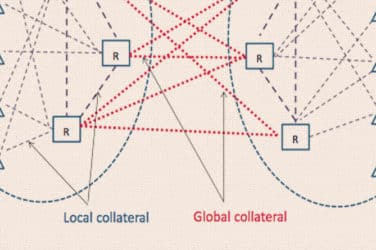
Operators of bond trading platforms are expanding in response to demand by institutional investors for a wider range of global cash credits, especially in Europe.
“On the buy side, the way in which a growing number of asset management institutions are executing cash credit business has changed,” said Rupert Warmington, director of European credit markets at Tradeweb, a provider of electronic marketplaces.
Specialist execution desks, which may trade a number of asset classes rather than just credit, are increasingly used.
“They are looking for a breadth of products in one place,” said Warmington. “They are also seeking tools that help them cater for increased flow, particularly when they may need to trade a high volume of small sizes, such as end-of-month portfolio rebalancing.”
These factors have caused electronic trading volumes to grow substantially in the last few quarters.
Tradeweb has introduced Central and Eastern Europe, Middle East and Africa (CEEMEA) bonds to its electronic cash credit marketplace.
The development is part of Tradeweb’s growth strategy for its credit business and follows the relaunch of its credit default swap indices platform, and the introduction of high-yield bonds and Asian credit.
“Our strategy has been to focus on institutional, real-money investors such as asset managers and to attract the high-quality liquidity that these clients need,” Warmington said. “In addition, we are looking to expand the global scope and range of the credit instruments we make available for trading to our client base. This strategy follows the requests of our client base to do so and also reflects the growing global nature and outlook of European credit market participants.”
A plethora of new platforms are trying to solve the issue of sourcing liquidity.
“Many organizations appear ready to become SEFs [swap execution facilities] and concerns about fragmenting liquidity are justified,” said Jeffrey Maron, managing director at MarkitSERV, a provider of electronic trade processing for over-the-counter derivatives. “What we are working on is a credit limit hub that will function as an industry utility and provide pre-trade clearing certainty, so that participants know that if they see a number on a screen, they can execute with confidence and know that the trade will clear.”
Vega-Chi, an alternative trading system operator, is launching its U.S. high-yield bond electronic trading platform, which enables institutional investors to trade directly with each other in an exchange-like electronic setting without the need for intermediation by a broker-dealer.
Vega-Chi will launch with more than 45 institutional users and expects the number of participants to exceed 80 within the first three months of trading.
Vega-Chi launched a multilateral trading facility in Europe for convertible bonds in 2010, followed by a high yield/subordinated bank debt platform in Europe earlier this year. The European platforms have approximately 100 participant buy-side firms.
For Tradeweb, the addition of CEEMEA bonds follows a period of high growth in European cash credit volumes. In the second quarter of this year, trading volume reached €22.1 billion, a 17% increase on the same period in 2011. Trades worth €27.6 billion were executed in the third quarter of this year—a 109% year-on-year increase. This record growth in trading activity is despite a slowdown in activity in the overall credit market.
“We are looking to expand the global scope and range of the credit instruments we make available for trading to our client base,” Warmington at Tradeweb said. “This strategy follows the requests of our client base to do so, and also reflects the growing global nature and outlook of European credit market participants.”





